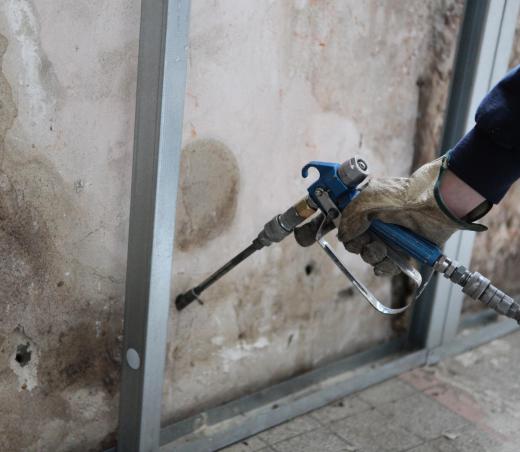Urethane foam is an artificial material with several different uses. The manufacturing process can produce foams of varying densities and flexibilities, which means that it can serve functions as diverse as bedding, packaging and footwear. It is important to note that urethane foam is most commonly used to refer to a material made from polyurethane. The urethane reference in this name is to the type of links, also known as carbamates, that join the units in polyurethane. There is some potential for confusion as the word urethane on its own is often used for a specific carbamate also called ethyl carbamate, but despite the name, this substance does not appear in the foam.
Perhaps the best known use of urethane foam is in bedding, such as mattresses. Because it is artificial, the foam can be made to a particular density, meaning manufacturers can offer a range of mattresses with different degrees of softness or firmness and even produce a mattress to order. The foam itself does not have the heat sensitivity used in memory foam mattresses that adjust to fit the user's sleeping position, but many such mattresses will use it for the base, with the visco-elastic "memory foam" acting as a topping. This is an effective way to get some of the benefits of the memory foam, while keeping overall costs down

Urethane foam can also be used for insulation, such as in attic roofs. The biggest advantage of the substance for this use is that it has a very low lambda value, which is the measure of how much heat it transfers, meaning it is a very effective thermal insulator. It is also particularly useful for insulation as it can be delivered in the form of a spray, which then hardens. This means the foam can be applied to any area and will fit the space perfectly. This removes the problems that come from applying insulation boards that have to be resized and may still leave gaps through which heat can escape.

There have been some medical questions raised about polyurethane foam. These include the respiratory health risks involved in applying the foam in uses such as insulation, and the dangers associated with the flame retardant treatment that must be applied to furniture made with it. Companies using the materials should follow established industry guidelines to ensure worker safety. While there are some claims that this foam can cause health risks for consumers, the evidence to back these claims is disputed and is not widely accepted.
